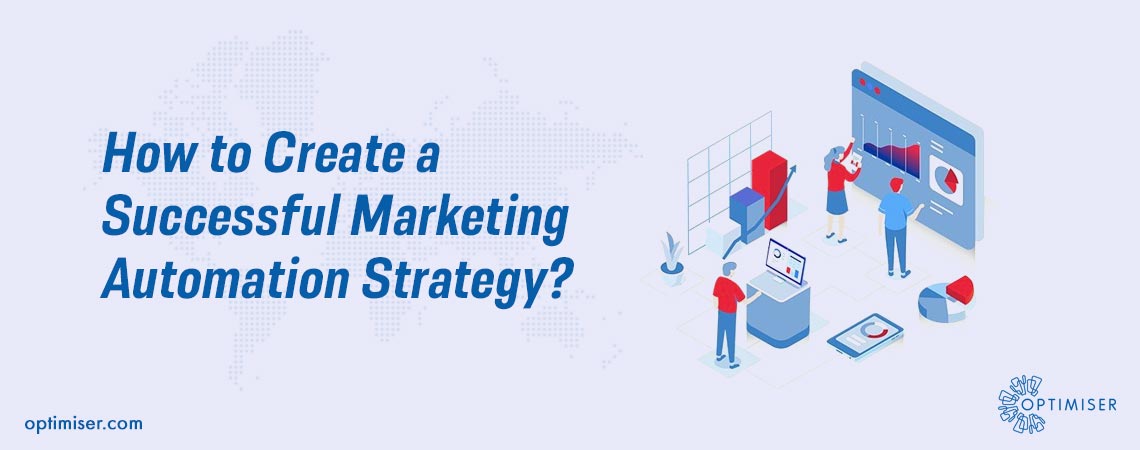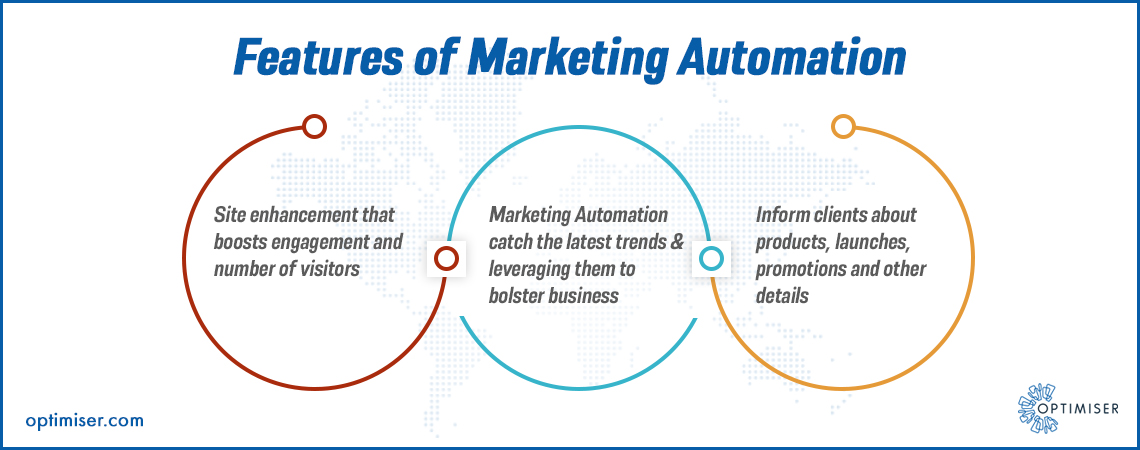
How to Create a Successful Marketing Automation Strategy?
Marketing Automation assists the marketing team in seamlessly processing tons of information and creating more successful campaigns. However, an additional benefit is that it eases the team members' work burden, automates repetitive tasks, and saves time. But even with the numerous benefits of marketing automation, many businesses are yet to adopt a marketing automation strategy.
What is Marketing Automation about?
Incorporating programming and advances ideal for the marketing teams to use across several channels. It cuts down repetitive tasks that are significant to the company, increases the possibility of personalising the content, and evaluates marketing strategies. Once the tedious tasks can be cut down, the team can focus on juggling multi-purpose campaigns,
Marketing mechanisation can assist in bolster the revenue generation within the organisation.
When automation is used effectively, the marketing team can focus on creating more intensive campaigns. In addition, it diminishes the chances of human error within the data processing. Marketing software in the UK, such as Optimiser, offers a fully customisable marketing suite that will adapt to your business needs.
“Marketing Automation replaces separate systems for email, web visitor tracking, lead scoring, nurture campaigns, campaign management and reporting with one solution that streamlines marketing processes and shares data with sales.”
-David Raab
Additionally, automation of marketing includes much more than just email marketing. It has the following:
Site enhancement: Tools for split testing two unique varieties of a website page. In this, you can use different images, formats, content etc., for the two web pages to debate which one is the better option.
Online media: Scheduling apparatuses allow you to man the popular hashtags, trends, significant keywords, and even brand mentions. You can use this information to further your brand image and create awareness among the masses.
Text Messages/ SMS: Send promotional messages based on customer behaviour. The action triggered messages can be sent to the customer when they are in the vicinity of a retail store or have products laying in their carts, awaiting purchase, etc.
The principal characteristic of automation is that all these mechanisms are consequently dealt with by the software. You will not have to spend long hours physically co-ordinating accounting pages, finishing client profiles, sending tedious emails and text messages. The manual work required in the marketing process is, for all intents and purposes, wiped out.

How to Create a Successful Marketing Automation Strategy?
1. Buyer’s journey
There are several types of automation in marketing. One can be involved in an extensive debate on where to begin from. To make it easy, begin asking yourself the following question: How can you implement the automation software before, during and after the sales cycle?
All your potential customers will fall somewhere in the sales cycle before making a purchase. So wherever the automation makes sense, along the sales funnel will be the conversion point.
Use marketing automation to educate your audience about your brand and interest new leads. This can aid in the decision making of the audience for many. Additionally, you can engage with existing customers while retaining them and boosting loyalty to them. Another way you can use automation is by automated workflow. This is dependent on when the customer takes a specific action that triggers emails. For example, A potential customer opening an email about a product launch will receive a promotional email offering a discount on the new product. You will not need to go through the email list to see who opened the mail and to whom will the promotional messages be sent.
2. Goal setting
Setting goals that are measurable and can be achieved is important.
Once you have a plan for strategy implementation, you need to figure out how you can quantify your progress and get reports for further usage. Define your target with the SMART objectives method:
S: Specific
M: Measurable
A: Achievable
R: Relevant
T: Time-Bound
.jpg)
3. Optimise your System
When you collect data with marketing strategies, you can leverage this data to upgrade your automation software in the following stage. You can plan the client's experience with hyper-personalisation and provide them with customised products/ services.
Evaluate the automation tools and become familiar with their workings. Then, assess the performance of the tools, and in case the current ones are not delivering the results, then it is obvious that some changes need to be made.
Furthermore, do not use misleading numbers in the measurements. This may lead to false conclusions. For example, say you made a profit of 5GBP, but you add 7GBP to the system. This will lead to incorrect conclusions. On the reports, the results may look pretty, but internally the organisation will be hit. These are vanity measurements that are used to promote results. Genuine numbers can ensure that you have a view of the big picture.
4. Customer Feedback
Marketing software in the UK offers several tools to collect customer feedback and receive in-built reports. While evaluating your automation software is significant, understanding what your customers have to say is also vital.
Surveys, feedback forms, etc., give your customers a chance to express themselves and upgrade their product/ service. This, in turn, provides you with additional data on what they like, and you can tailor campaigns that are interesting to the customer and new leads.
SUMMARY
Marketing Automation Strategy is crucial for every business to debate and evolve as it expands. Sticking to one strategy will not pan out as the market changes with time, so do the requirements of people.

30 days free trial. No credit card required
 One powerful platform
One powerful platform
 Simple to use
Simple to use
 Comprehensive
Comprehensive



